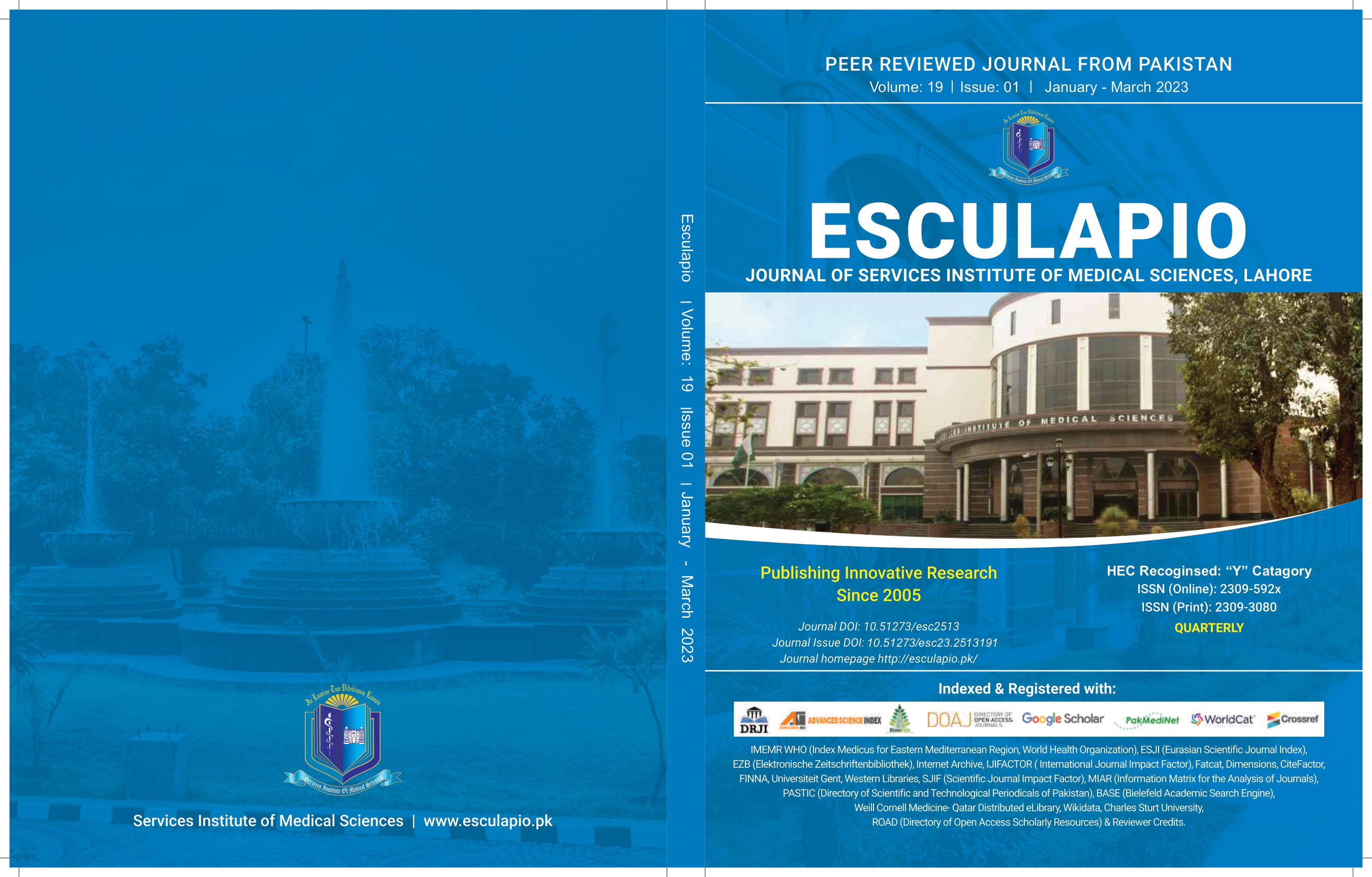Comparative evaluation of high versus low pressure pneumoperitoneum in causing acute kidney injury during laparoscopic cholecystectomy
DOI:
https://doi.org/10.51273/esc23.251912Keywords:
Laparoscopic cholecystectomy, Pneumoperitoneum, Acute kidney injuryAbstract
Objective: Aim of our study is to monitor low- and high-pressure pneumoperitoneum effects and find optimum intra-abdominal pressure that is safe to avoid or minimise acute kidney injury.
Material & Methods: This study was conducted at Fatima Memorial hospital from May 2022 to November 2022. A total of 80 patients were segregated into two groups of 40 each. Group A had laparoscopic cholecystectomy with 15 mmHg pneumoperitoneum pressure while Group B had 20 mmHg pneumoperitoneum pressure. Patients were monitored postoperatively for creatinine and urine output changes at 8 hours, 24 hours and 72 hours interval.
Results: Post operative creatinine rise and fall in urine output was statistically significant between both group indicating 15 mmHg pneumoperitoneum is safer for laparoscopic cholecystectomy to avoid AKI. Operation time, inflation time and blood loss were statistically significant and remain the key factors in predicting AKI after laparoscopic cholecystectomy.
Conclusion: AKI is a common but transient condition that can arise after laparoscopic cholecystectomy. It can be minimized by keeping intra-abdominal pressure ≤15mmHg. Operation time, inflation time and perioperative blood loss can predict AKI perioperatively.










